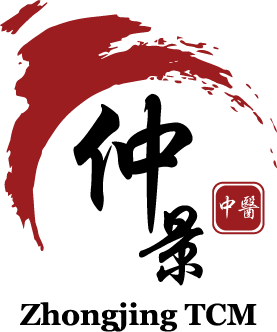Introduction
Respiratory disease is commonplace in Singapore, referring to diseases which affects the lungs and respiratory tract of our body. The most commonly encountered would be the flu or cold, both caused by different viruses, and are usually seasonal. Their symptoms are varied, with most affecting the respiratory tract, while some can manifest in the form of body aches, diarrhoea or fatigue.
Cough is one of the most commonly encountered symptoms. It can manifest as a symptom of a disease, for example in the case of flu or asthma, or can be a disease on its own.
In TCM, some of the commonly encountered respiratory diseases in Singapore would be the common cold or flu, cough, asthma (in remission stage) and bronchitis. This article would share more about how TCM views some respiratory diseases, and how we can better manage them.
Respiratory Disease in TCM
In TCM, the lung is a major organ which plays a role in the circulation of oxygen throughout the body, as well as the first line of defence against foreign pathogens. It is considered a “delicate” organ (娇脏), hence its ease of contracting diseases compared to other TCM organs.
Furthermore, in the spread of pathogens, it is believed that pathogenic forces enter the body through the nose and mouth, attacking the lung, resulting in the symptomatic presentation of various respiratory diseases.
Pathogenic forces in TCM refers to wind, cold, heat (fire), damp, summer-heat, dryness, collectively known as the Six Exogenous Factors (六淫). These six forces can affect the lung and the body, causing pathogenic changes in the lung, as well as other organs, resulting in the presentation of respiratory diseases.
Wind is the “chief” of the Six Factors, and usually works in tandem with other Factors as well, for example Wind-Cold or Wind-Heat. When these Factors try to invade the body, the body mounts a response in order to repel them. However, if the body is not able to repel these Factors, some pathogenic changes will result. An individual’s constitution is also a key role in repelling these factors – if the person is weaker then the response would be weaker and the Factors will invade the body, or the Factor may affect the body by provoking innate factors into causing symptoms.
In the case of the common cold or flu, some individuals would complain of body aches or aversion to cold or wind or heat. This would be the effect of the body’s response, constricting certain parts of the body in order to repel these external Factors from entering the body even further. For example, prolonged exposure to cold would make an individual develop aversion to cold, as pathogenic cold would have invaded the body, resulting in the body constricting, and the individual would be averse to cold.
With the pathogenic forces affecting the body, these Factors can upset delicate balances which are essential for the maintenance of physiological functions. As mentioned earlier, the lung is the first to be affected by such pathogenic forces, and the lung governs the natural ascent and descent of qi and air. With the pathogenic forces invading the lung, this natural cycle of qi and air is upset, causing adverse flows. This adverse flow of qi travels upwards, resulting in coughing. In worse cases, when the natural up-down flow is severely affected, breathing difficulty may result.
Asthma is an interesting disease in TCM. Theories suggest that there is dormant “phlegm” (not the same as phlegm or sputum in modern medicine) in the afflicted individual. This phlegm is usually hidden in the lungs or respiratory tract and would remain harmless unless excited by pathogenic forces. The pathogenic forces would cause the disruption of qi and air flow, and at the same time, excite the phlegm, causing an exacerbation of the qi and air disruption. For asthmatic patients who are in remission and asymptomatic, the phlegm is in dormancy due to effective control and intervention. However, with an allergen or other diseases, this may set off the bronchial spasms causing an asthmatic attack to happen. Thus, in this case, the allergen, or the nature of the other diseases, may be a pathogenic factor in provoking the respiratory tract.
For cough, and bronchitis, especially in cases with sputum, these are usually caused by External Pathogenic Factors. Besides causing the disruption of qi and air flow mentioned earlier, these Factors can also cause a generation and build-up of sputum or phlegm in the airway. It is believed that white sputum being of “cold” nature, while yellow sputum is of “heaty” nature. The Dryness pathogenic factor however does not generate sputum, as it would have “dried” up the mucus in the respiratory tract.
However, these are all referring to cough of Exogenous nature, meaning that they are all due to the Six Exogenous Pathogenic Factors. There are also cases of cough that are a result of “Internal Injury” (内伤), caused by imbalances and organ dysfunction. These cases of cough are not considered in this setting. In the Internal Canon of the Yellow Emperor (《黄帝内经》), it is said that there are all 11 TCM organs of the body can cause cough, not just only the lung (“五脏六腑皆令人咳,非独肺也”) .
Common Treatments of TCM
- Cold/flu
The nature of the cold or flu is to be determined first. Once the nature is determined, an appropriate treatment can then be administered. In Singapore, we can observe cold or flu cases of wind-cold, wind-heat, or wind-damp nature. Both the diseases are caused by viruses – the flu being caused by influenza viruses and the cold caused by more than 200 different strains with rhinoviruses being the most common. They are usually managed symptomatically, but in Singapore many of us are able to self-medicate with the many readily available Over-The-Counter (OTC) medicines available to us.
- Cough
- Asthma

